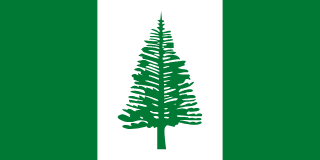Norfolk Island - Introduction

Here, let us take a look at some of the important facts about the country Norfolk Island. Here, we have some interesting facts about Norfolk Island. Norfolk Island (officially: Territory of Norfolk Island) is a country in Oceania, precisely in Australia and New Zealand, with a population of about N/A inhabitants today (2025-12-13). The capital city of Territory of Norfolk Island is Kingston, and the official country TLD code is .nf. Norfolk Island has cca2, cca3, cioc, ccn3 codes as NF, NFK, N/A, 574 respectively. Check some other vital information below.
Polynesians lived on Norfolk Island between 1200 and 1500, but the remote island was uninhabited by the time British explorer James COOK landed on the island in 1774. Two British attempts at establishing the island as a penal colony (1788-1814 and 1825-55) were ultimately abandoned.
In 1856, almost 200 Pitcairn Islanders -- descendants of the Bounty mutineers and their Tahitian companions -- were relocated to Norfolk Island because of overcrowding on the Pitcairn Islands. Some returned to the Pitcairn Islands over the next few years, but most settled permanently on Norfolk Island and recreated their previous land tenure and governance structures. Norfolk Island retained a great degree of local control until 1897, when it became a dependency of New South Wales. During World War II, Norfolk Island was an airbase and an important refueling stop in the South Pacific. In 1976, an Australian judge recommended Norfolk Island be incorporated fully into Australia, which Norfolk Islanders rejected. After an appeal to the UN, Australia granted limited self-government to Norfolk Island in 1979.
With growing financial troubles during the 2000s, Australia abolished the Norfolk Island Legislative Assembly in 2015, reduced Norfolk Island’s autonomy in 2016, and suspended the local council in 2020. Most services are provided by a mix of the Australian Capital Territory and the states of New South Wales and Queensland. These moves were unpopular on Norfolk Island, which has sought to have its self-government restored and as of 2024, the Australian Government was working with Norfolk Island to establish a new local governing body.
In 1856, almost 200 Pitcairn Islanders -- descendants of the Bounty mutineers and their Tahitian companions -- were relocated to Norfolk Island because of overcrowding on the Pitcairn Islands. Some returned to the Pitcairn Islands over the next few years, but most settled permanently on Norfolk Island and recreated their previous land tenure and governance structures. Norfolk Island retained a great degree of local control until 1897, when it became a dependency of New South Wales. During World War II, Norfolk Island was an airbase and an important refueling stop in the South Pacific. In 1976, an Australian judge recommended Norfolk Island be incorporated fully into Australia, which Norfolk Islanders rejected. After an appeal to the UN, Australia granted limited self-government to Norfolk Island in 1979.
With growing financial troubles during the 2000s, Australia abolished the Norfolk Island Legislative Assembly in 2015, reduced Norfolk Island’s autonomy in 2016, and suspended the local council in 2020. Most services are provided by a mix of the Australian Capital Territory and the states of New South Wales and Queensland. These moves were unpopular on Norfolk Island, which has sought to have its self-government restored and as of 2024, the Australian Government was working with Norfolk Island to establish a new local governing body.
All Important Facts about Norfolk Island
Want to know more about Norfolk Island? Check all different factbooks for Norfolk Island below.
-
 Norfolk Island Factbook
Norfolk Island Factbook
-
 The Economy of Norfolk Island
The Economy of Norfolk Island
-
 Learn about the Government of Norfolk Island
Learn about the Government of Norfolk Island
-
 Communication in Norfolk Island
Communication in Norfolk Island
-
 Popular Universities in Norfolk Island
Popular Universities in Norfolk Island
-
 Enerny in Norfolk Island
Enerny in Norfolk Island
-
 Transport in Norfolk Island
Transport in Norfolk Island
-
 The Geography and society of Norfolk Island
The Geography and society of Norfolk Island
-
 The Environment of Norfolk Island
The Environment of Norfolk Island
-
 Military and security in Norfolk Island
Military and security in Norfolk Island